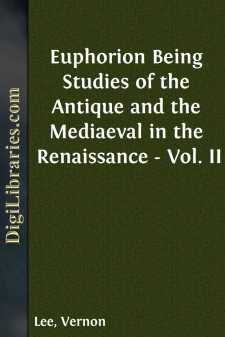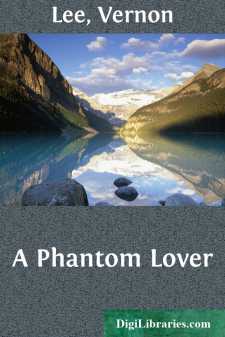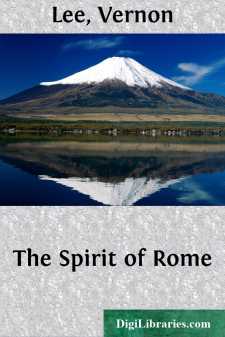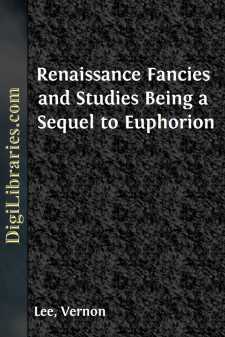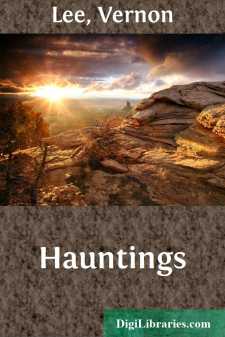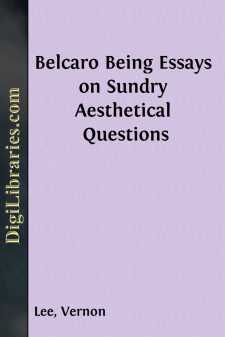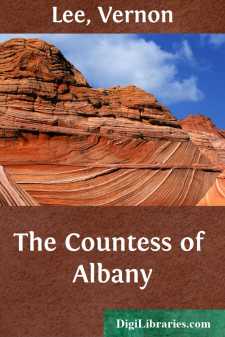Categories
- Antiques & Collectibles 13
- Architecture 36
- Art 48
- Bibles 22
- Biography & Autobiography 813
- Body, Mind & Spirit 142
- Business & Economics 28
- Children's Books 16
- Children's Fiction 13
- Computers 4
- Cooking 94
- Crafts & Hobbies 4
- Drama 346
- Education 46
- Family & Relationships 57
- Fiction 11829
- Games 19
- Gardening 17
- Health & Fitness 34
- History 1377
- House & Home 1
- Humor 147
- Juvenile Fiction 1873
- Juvenile Nonfiction 202
- Language Arts & Disciplines 88
- Law 16
- Literary Collections 686
- Literary Criticism 179
- Mathematics 13
- Medical 41
- Music 40
- Nature 179
- Non-Classifiable 1768
- Performing Arts 7
- Periodicals 1453
- Philosophy 64
- Photography 2
- Poetry 896
- Political Science 203
- Psychology 42
- Reference 154
- Religion 513
- Science 126
- Self-Help 84
- Social Science 81
- Sports & Recreation 34
- Study Aids 3
- Technology & Engineering 59
- Transportation 23
- Travel 463
- True Crime 29
Euphorion Being Studies of the Antique and the Mediaeval in the Renaissance - Vol. II
by: Vernon Lee
Description:
Excerpt
I.
Real and Ideal—these are the handy terms, admiring or disapproving, which criticism claps with random facility on to every imaginable school. This artist or group of artists goes in for the real—the upright, noble, trumpery, filthy real; that other artist or group of artists seeks after the ideal—the ideal which may mean sublimity or platitude. We summon every living artist to state whether he is a realist or an idealist; we classify all dead artists as realists or idealists; we treat the matter as if it were one of almost moral importance. Now the fact of the case is that the question of realism and idealism, which we calmly assume as already settled or easy to settle by our own sense of right and wrong, is one of the tangled questions of art-philosophy; and one, moreover, which no amount of theory, but only historic fact, can ever set right. For, to begin with, we find realism and idealism coming before us in different ways and with different meaning and importance. All art which is not addressing (as decrepit art is forced to do) faculties to which it does not spontaneously and properly appeal—all art is decorative, ornamental, idealistic therefore, since it consciously or unconsciously aims, not merely at reproducing the already existing, but at producing something which shall repay the looking at it, something which shall ornament, if not a place, at least our lives; and such making of the ornamental, of the worth looking at, necessarily implies selection and arrangement—that is to say idealism. At the same time, while art aims definitely at being in this sense decorative, art may very possibly aim more immediately at merely reproducing, without, selection or arrangement, the actually existing things of the world; and this in order to obtain the mere power of representation. In short, art which is idealistic as a master will yet be realistic as a scholar: it decorates when it achieves, it copies when it studies. But this is only half the question. Certain whole schools may be described as idealistic, others as realistic, in tendency; and this, not in their study, but in their achievement. One school will obviously be contented with forms the most unselected and vulgar; others will go but little out of their way in search of form-superiority; while yet others, and these we must emphatically call idealistic, are squeamish to the last degree in the choice and adaptation of form, anxious, to get the very best, and make the very best of it. Yet, on thinking over it, we shall find that realistic. and idealistic schools are all, in their achievements, equally striving after something which is not the mere reproduction of the already existing as such—striving, in short, after decoration. The pupil of Perugino will, indeed, wait patiently to begin his work until he can find a model fit for a god or goddess; while the fellow-craftsman of Rembrandt will be satisfied with the first dirty old Jew or besotten barmaid that comes to hand. But the realistic Dutchman is not, therefore, any the less smitten with beauty, any the less eager to be ornamental, than the idealistic Italian: his man and woman he takes indeed with off-hand indifference, but he places them in that of which the Italian shall perhaps never have dreamed, in that on which he has expended all his science, his skill, his fancy, in that which he gives as his addition to the beautiful things of art—in atmosphere, in light, which are to the everyday atmosphere and light what the patiently sought for, carefully perfected god or goddess model of Raphael is to the everyday Jew, to the everyday barmaid, of Rembrandt....


